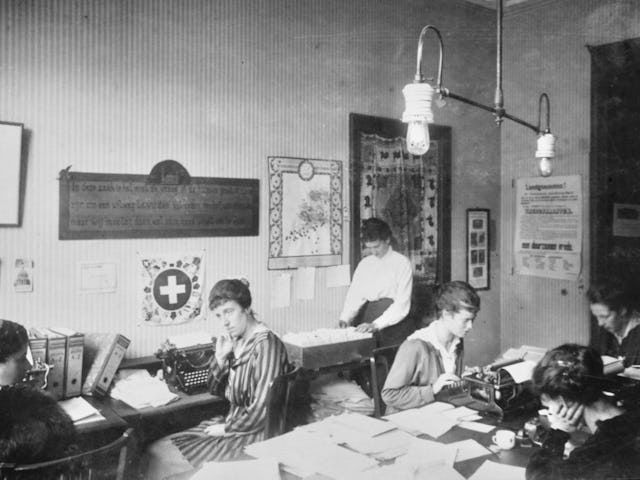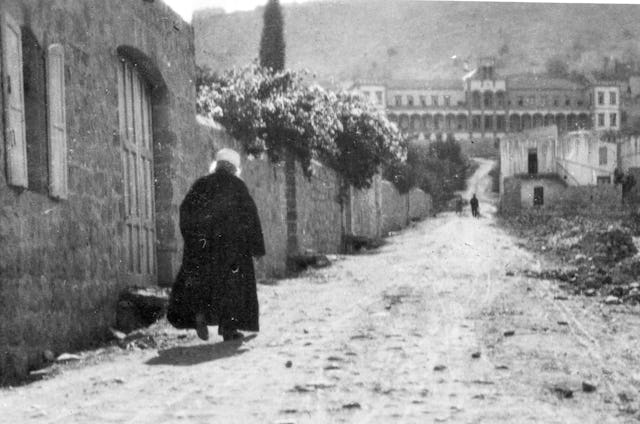100 years on, remembering ‘Abdu’l-Baha’s call for peace in the First Tablet to The Hague
THE HAGUE, Netherlands — A century ago yesterday, ‘Abdu’l-Baha penned what has come to be known as the First Tablet to The Hague, an exploration of the profound societal changes required for the attainment of international peace. Marking this occasion, the Baha’i community of the Netherlands on Tuesday night held a special commemorative event at its National Center in The Hague.
Attendees—among them religious leaders—discussed themes from the Tablets to The Hague. “Peace is at the heart of humanity and ‘Abdu’l-Baha in His letter is helping us see how we can reach it,” explained Marga Martens, a representative of the Netherlands’ Baha’i community. “Peace is inevitable, but we have to work hard to reach that state in the world.”
Addressing the Executive Committee of the Central Organization for a Durable Peace in The Hague, ‘Abdu’l-Baha writes in the Tablet’s opening lines, "Your intention deserves a thousand praises, because you are serving the world of humanity, and this is conducive to the happiness and welfare of all.”
In the tablet, ‘Abdu’l-Baha explains that peace would require a transformation in human consciousness and a commitment to fundamental spiritual principles enunciated by Baha’u’llah, such as the abolition of all forms of prejudice, the harmony of science and religion, and the equality of women and men, among others.
While an English translation of the first half of the tablet was published in Selections from the Writings of ‘Abdu’l-Bahá in 1978, the complete translation was prepared in May this year and presented on the Baha’i Reference Library.
A photographic chronology recently published on a website by Jelle and Adib de Vries in the Netherlands sheds light on events surrounding ‘Abdu’l-Baha’s Tablets to The Hague. The website describes how two Baha’is in Iran, Ahmad Yazdani and ‘Ali-Muhammad Ibn-i-Asdaq, wrote to ‘Abdu’l-Baha in 1915 about the Central Organization for a Durable Peace. He encouraged them to introduce the Organization to the Baha’i teachings on peace. The Organization wrote to ‘Abdu’l-Baha in 1916, but wartime communications into the Holy Land were blocked.
The Organization’s letter reached ‘Abdu’l-Baha in Haifa three years later, in the aftermath of World War I. ‘Abdu’l-Bahá responded immediately, sending Mr. Yazdani and Mr. Ibn-i-Asdaq to deliver His message in person. According to Dr. de Vries’ research, they arrived in The Hague in May 1920 only to find that the Central Organization for a Durable Peace had virtually dissolved.
Nevertheless, the Organization replied to ‘Abdu’l-Baha’s message, prompting Him to write what is known as the Second Tablet to The Hague. In it, He asserts that “our desire for peace is not derived merely from the intellect: It is a matter of religious belief and one of the eternal foundations of the Faith of God.”
The goal of world peace is central to Baha’i belief. In 1867 and 1868, Baha’u’llah addressed an extraordinary series of tablets to the kings and rulers of the world, urging them to set aside their differences, to establish a system of collective security and move toward disarmament, to champion the cause of justice, to show the utmost care and consideration for the well-being and rights of the poor, and to work toward a lasting peace.
From 1911 to 1913, ‘Abdu’l-Baha spoke extensively during His tour of Europe and North America about the imperative of peace and warned that Europe was on the brink of war.
In a letter dated 28 November 1931, Shoghi Effendi states that the oneness of humanity “calls for no less than the reconstruction and the demilitarization of the whole civilized world—a world organically unified in all the essential aspects of its life ….”
The Universal House of Justice in October 1985 penned a significant message on the subject of world peace, known as The Promise of World Peace. In January of this year, the House of Justice also released a message addressing contemporary challenges facing humanity, in which it states that “the establishment of peace is a duty to which the entire human race is called.” The House of Justice further states that although “world unity is possible—nay, inevitable—it ultimately cannot be achieved without unreserved acceptance of the oneness of humankind.”
“Unity, in its Bahá’í expression, contains the essential concept of diversity, distinguishing it from uniformity,” the House of Justice writes. “It is through love for all people, and by subordinating lesser loyalties to the best interests of humankind, that the unity of the world can be realized and the infinite expressions of human diversity find their highest fulfilment.”

